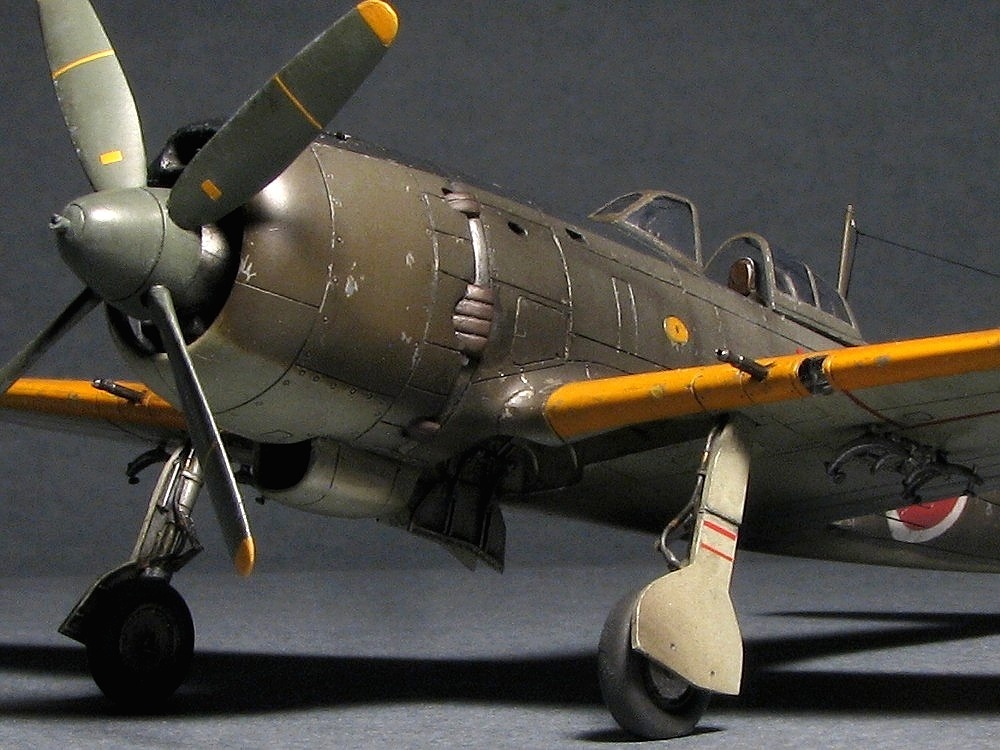
Nakajima Ki84 Army Type 4 Fighter Hayate Hasegawa 1/72
 |
|
|
 This is the fuselage of Hasegawa 1/72 kit. Its distance and angle is the same as the 104 Sentai camouflaged Otsu model. |
 Drawings. |
 Drawings is overlaid on the kit. The height of the front fuselage is taller by 2mm (.08"). The inclination angle from the canopy to cowl is steep. The distance from the cowl to wing leading edge is long. |
 The camouflaged Otsu model of the 104 Sentai |
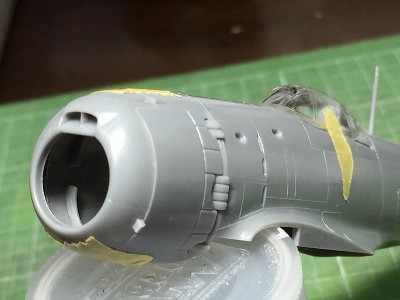 The opening of the cowl is small and low. So the "forehead" looks swelled. I felt this face was alike the creature of the movie "Alien". |
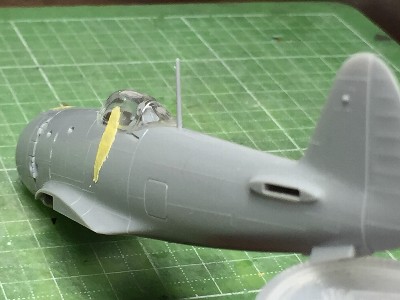 The fuselage cross section shape is basically correct. The upper fuselage at the cowl to canopy is slim. |
|
|
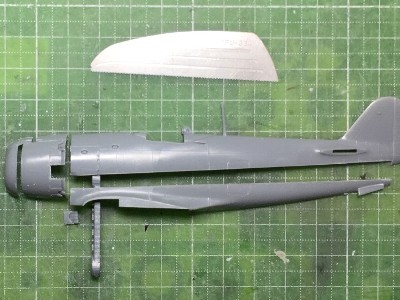 At first, the cowl was cut off with etching saw. The center exhaust stucks were cut out (it would be re-used after). Then the fuselage was cut into halves with a craft knife. |
 In order to correct the nose inclination angle, the upper half was cut at #5 frame, slid by 1mm (.04") and rejoined. The portion painted in black was sanded off. |
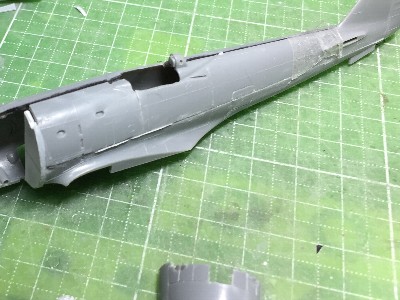 The port fuselage was corrected and the starboard one was not yet corrected. Note the cutting surface (black). |
 The upper one is before correction, the lower is after correction. The corrected fuselage is significantly thin. |
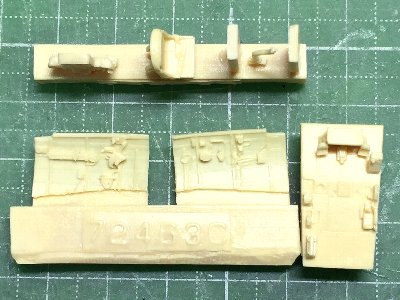 This is True Details' resin cockpit set which I bought long ago. Sorry, I don't know it is available now. |
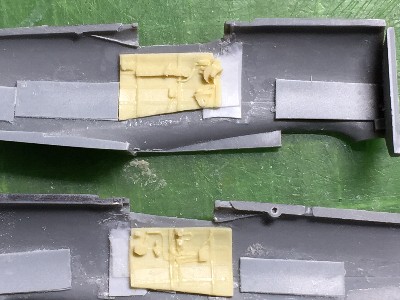 The front portion of the side wall was cut off. Because, the reinforcement plastic sheet (white) interferes. |
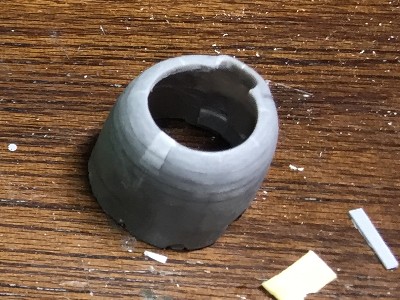 The front cowl was widened and shims were inserted. Then the front cowl was rejoined and sanded. In order to check the correctness of its shape, contour lines were drawn with a pencil. |
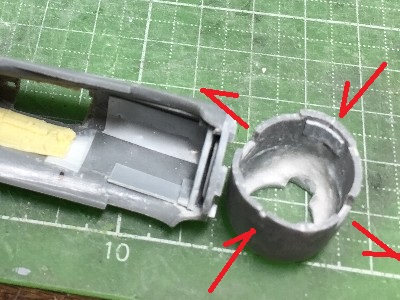 The side portion of the cowl was pressed vertically to fit to the side view and cross section drawings. The inside of the cowl was reinforced with CA glue and plastic powder. |
 The outline of the cowl was sanded with checking by the template which was cut from drawings. Panel lines were drawn with a pencil to check the outline image. |
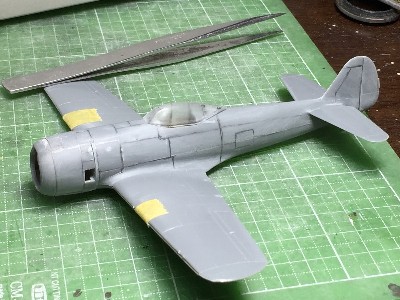 To check the image, the kit canopy was temporary put on. The actual canopy would be heat formed. |
|
The wing position was a little low in a relation with the fuselage. So the wing position was simultaneously corrected in correction works of the fuselage height. The kit rudder was narrow at its lower portion (this portion was leaded to the fuselage). So 0.5mm (.02") plastic sheet was inserted between left and right half fuselage parts. On the other side, the upper portion of the kit rudder was a little thick. So this portion was sanded to be thin. The upper side portion of the cowl (the side of engine air intake duct) was sanded adequately. As the result of sanding, the kit cowl parts was almost taken away and white plastic powder of inside reinforcement could be seen through. Now, as the result of this correction, the new fuselage appeared. The 3D image of this object was quite different from familiar-looking of existing old Hayate kits. So, at first, I thought I might make mistakes. But when I saw it from the same angle as documentary photos, it was completely similar to the actual aircraft. I think this odd feeling is caused by a imprinting of old kits. In addition, I think there is a gap between a drawings and a 3D object. If you make model fuselage in correct dimension as drawings, you feel that the model is a little thin. This feeling was felt when I built Spitfire as well. My drawing fuselage looks thicker than the actual aircraft.
|
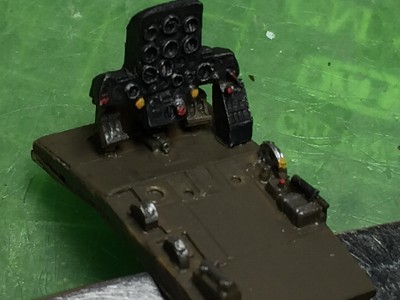 The side wall and floor was painted in No 7 Yellow Green. This color was a mixture of Mr.Color #12 Olive Drab (1) and Dark Earth with 2:1. |
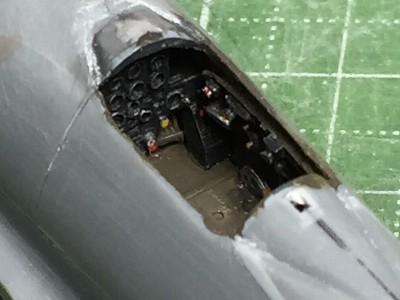 Additional colors of yellow and red were fiction. |
|
|
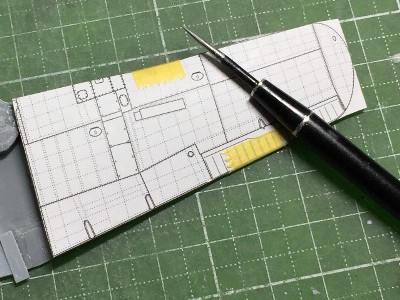 Positions of start and end points of panel lines were marked through the scale drawings with a needle. |
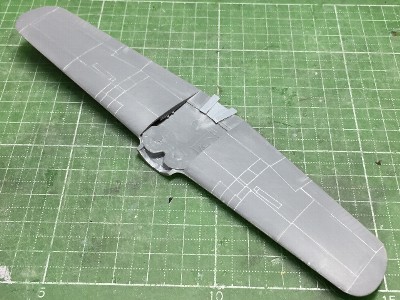 The wing was glued, sanded and engraved. The wing tip edge was sanded to be sharp. |
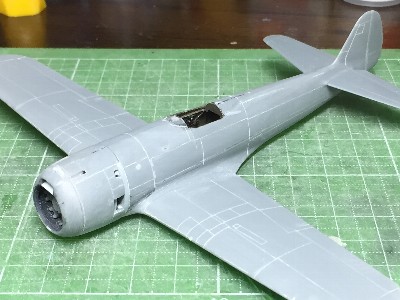 The wing was glued to the fuselage. |
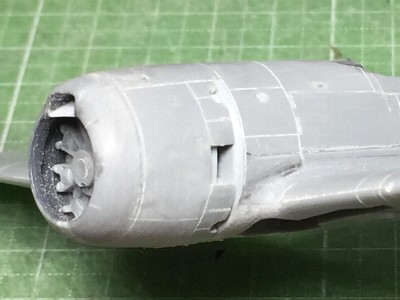 The engine and intake vane were glued. |
|
|
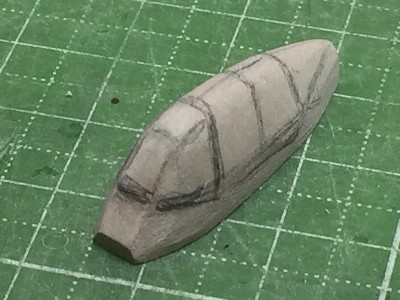 The wood mold was made of chemical wood. |
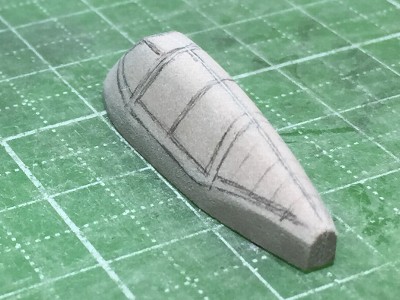 At first, the mold was made in a correct outline shape. |
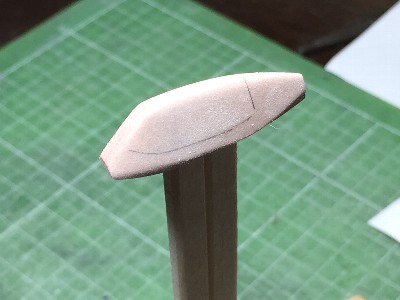 Then the mold was sanded by the thickness of clear plastic. |
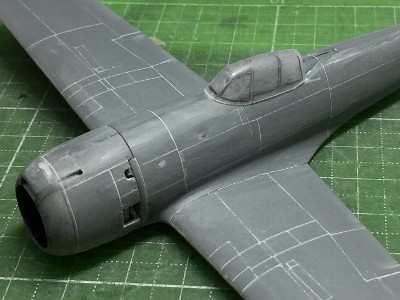 Clear 0.4mm (.016") thick styrene sheet (Tamiya Pla-Plate) was heat formed. |
|
|
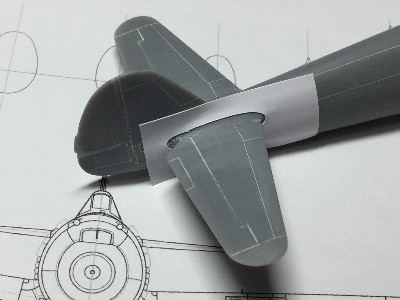 Curved panel lines were engraved with custom made templates cut with home-use cutting machine. |
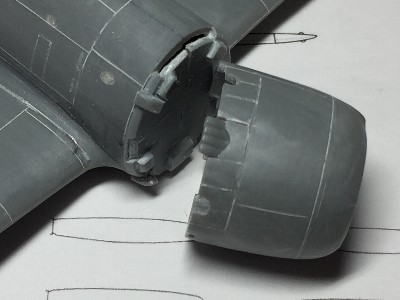 The center four exhaust stacks were from kit. The upper and lower exhausts were scruch-built. |
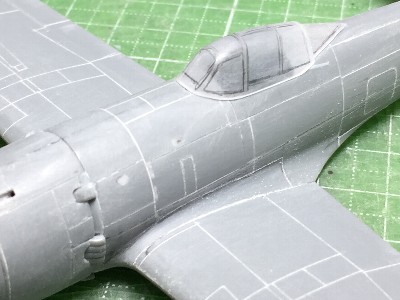 I didn't satisfy with the shape of canopy. Then the wood mold was revised and heat formed again and again. |
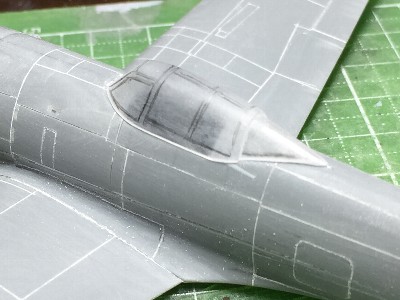 The rear fixed canopy would be formed with the same wood mold. |
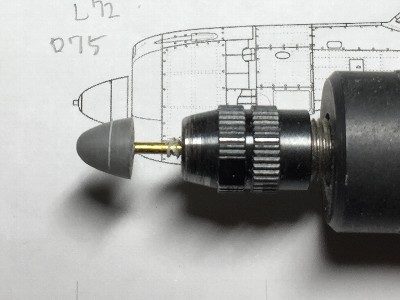 The kit spinner was not correct. So it was turned with a hand router. |
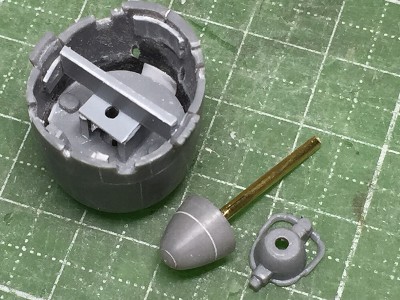 1.5mm brass rod was used for the propeller axis. The gear housing was from the kit. |
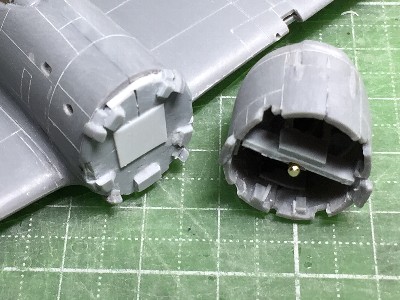 |
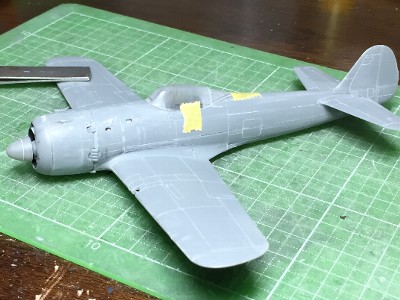 The total image appeared. |
|
|
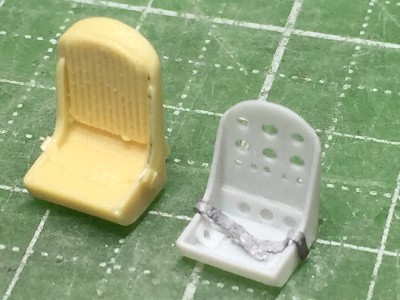 The pilot seat was made of 0.3mm (.01") plastic sheet. The left is True Details' resin seat. |
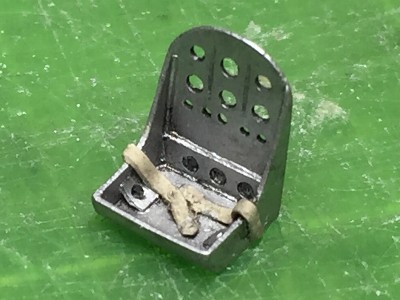 The colors of the seat and harness were assumption. The grip of control stick was made of wood in the actual aircraft. |
|
 The landing light was made of clear sprue which was drilled in the back side. Then punched out aluminum sheet was glued in the hole with clear paint. |
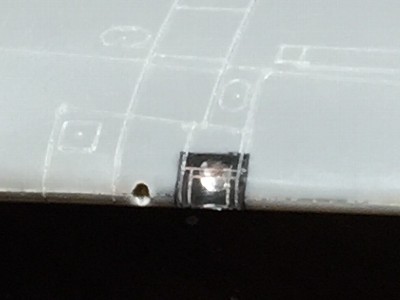 The side and rear surfaces of clear sprue were painted dark gray. |
|
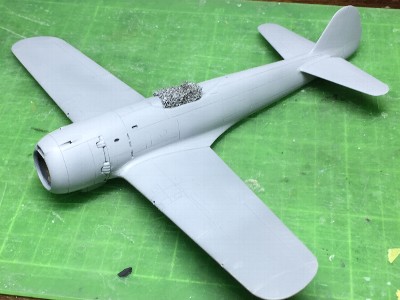 Mr. Surfacer 1200 was thinly sprayed. It revealed defects of the model surface. Then these defects were patiently fixed up. |
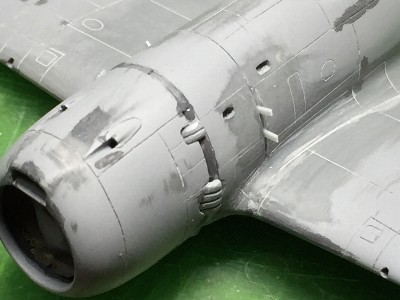 Details were added. |
|
|
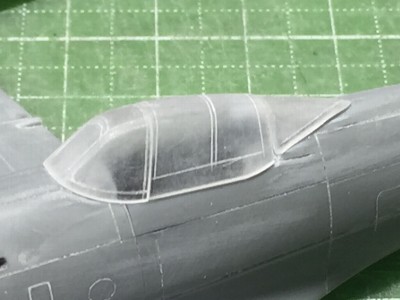 Frames were engraved. The rear fixed canopy was from kit. |
 The wind screen and fix canopy were glued. The inside surface of them were polished. |
|
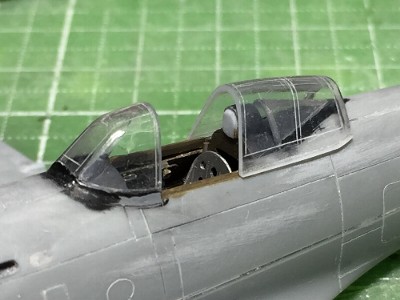 Then outside was polished as well. |
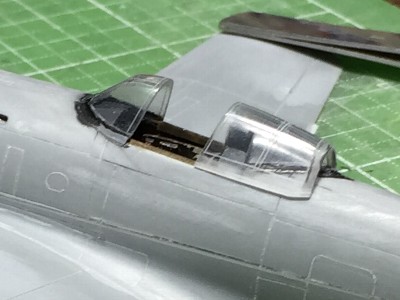 The slide rail was made of plastic sheet (white). |
|
|
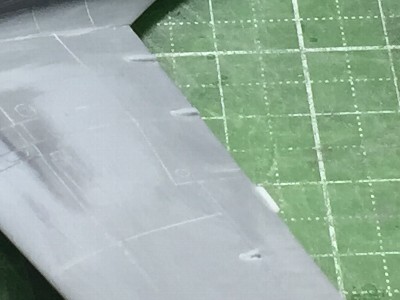 Details were added. |
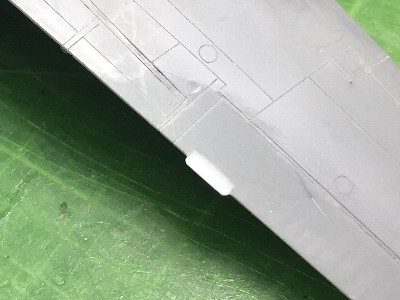 |
 Fasteners were engraved with beading tools. The top frame of the canopy was engraved with handmade double needles with guides of tape. |
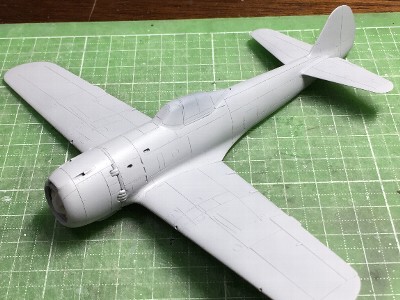 Surfacer was sprayed again. Then defects appeared, they were fixed up, and so on. |
|
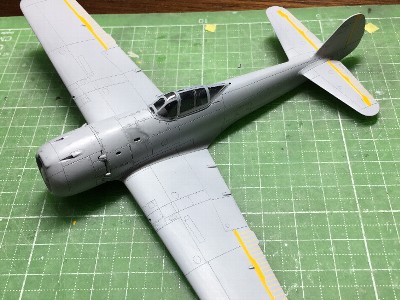 Rib tapes were custom made dry decals. |
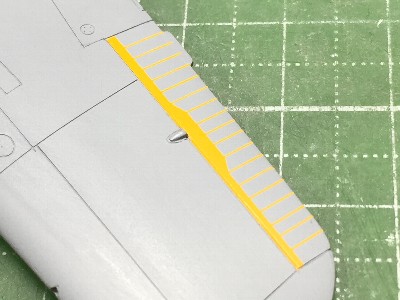 The width of the rib was 0.2mm (.008"). |
|
|
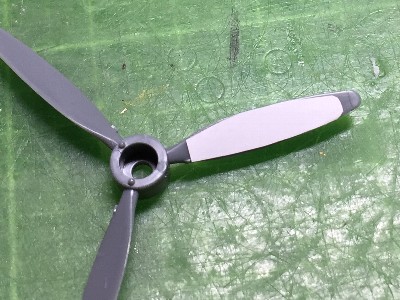 The propeller blade was from Tamiya Mosquito. Scale drawings was cut and pasted. |
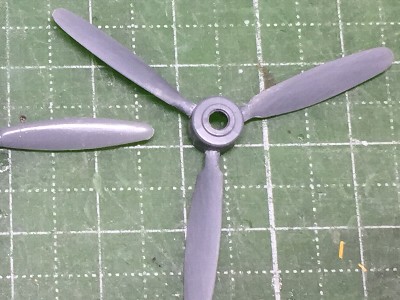 The right is corrected blade (of course, one more blade is prepared). The left is Hasegawa original. |
|
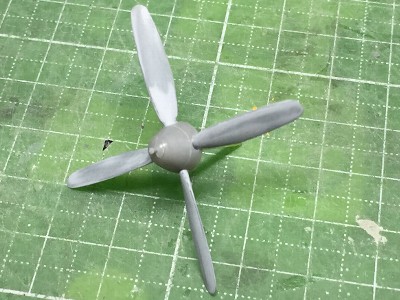 Propeller blades were glued on the spinner. |
|
|
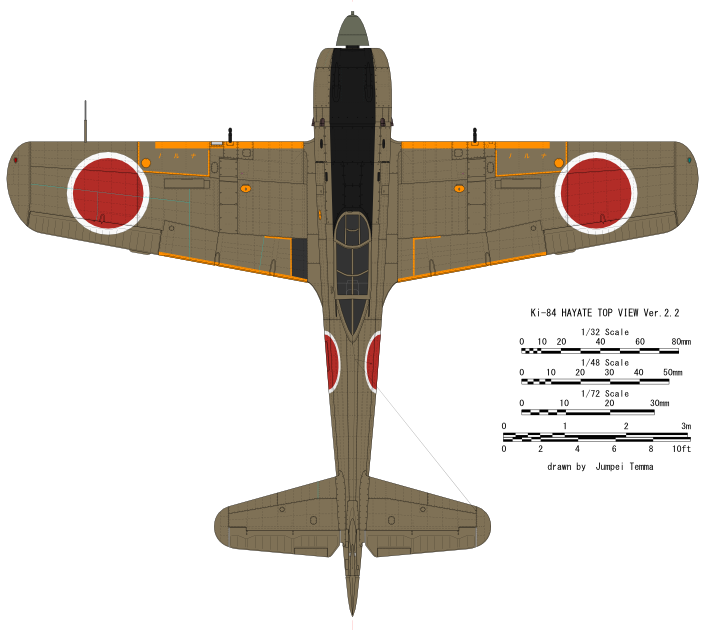
|
|
|
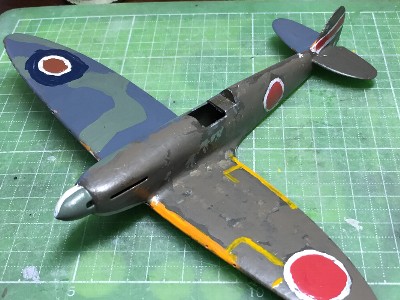 Each color shade and the total balance were checked with a waste model. FAA Seafire was simultaneously on going. |
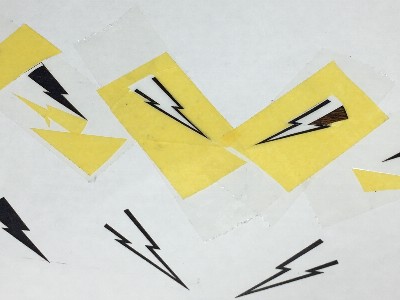 Masking tape was cut on the print out of illustration data. |
|
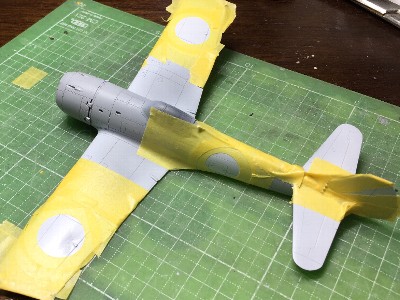 GX1 Cool White was sprayed on surfacer and masked for next red painting. |
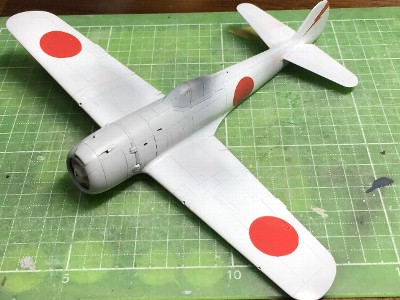 Red was sprayed and masking tape was removed. |
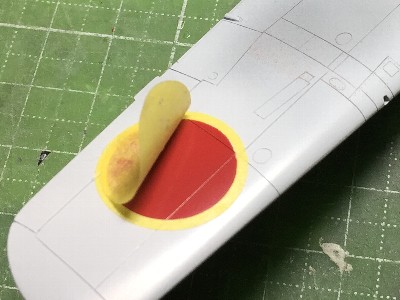 The white fringe of insignia was masked. |
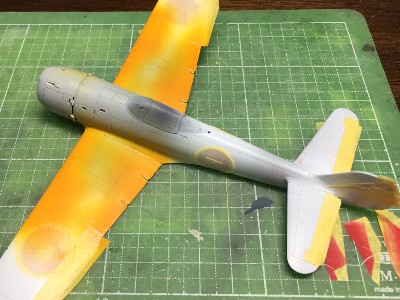 Fabric control surfaces were masked as well. Then orange yellow was painted. |
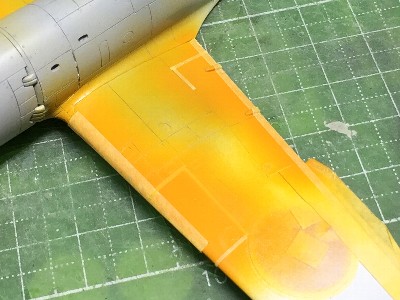 The identification band and walkway were masked. |
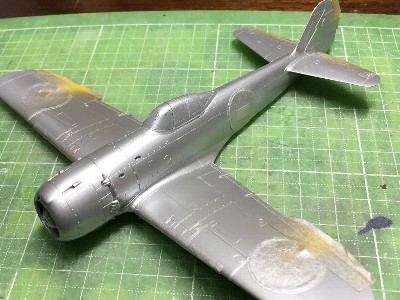 #8 Silver was sprayed. |
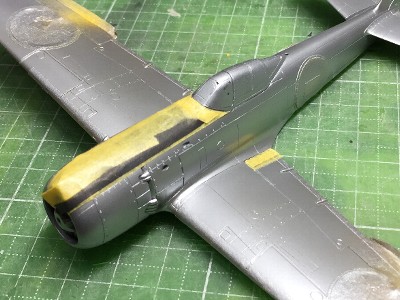 The antiglare and step was painted in dark gray (70% black + 30% white) and masked. Then Silicon Barrier was sprayed over the upper surface and Light Gray Green was sprayed on the lower surface. |
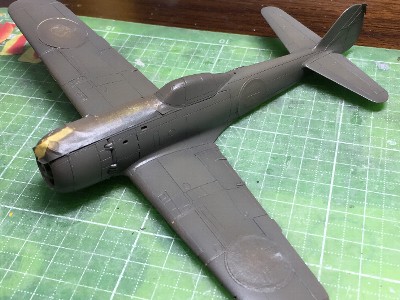 No 7 Yellow Green was finished. Weathered effects were applied a little with an airbrush. |
 Basic painting works were finished. I felt that Red should be darker. |
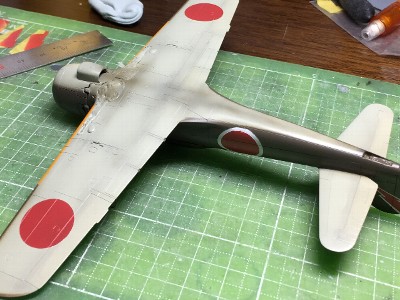 Blu Tack was filled in the gear bay. |
|
|
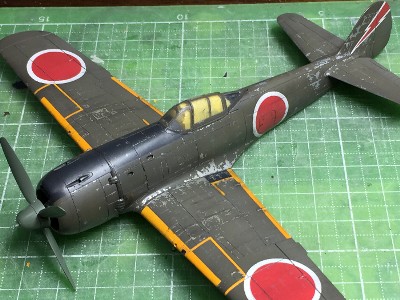 Scratching was applied. Then Flat Clear was sprayed and polished with Mr. Laplos #6000. Weathering wash was Tamiya Weathering Master with soapy water. |
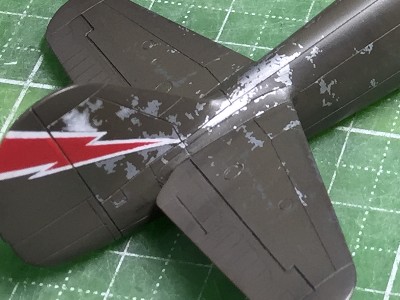 Scratching paint on the starboard side was correctly applied as possible as original photo. |
|
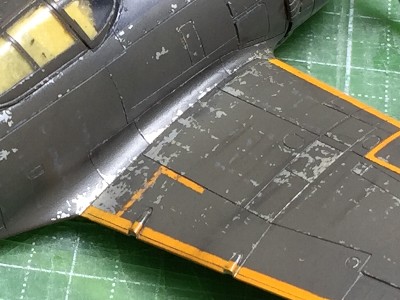 Scratching paint on the wing was applied along rivet lines. I imaged footsteps of maintenance crews. Dark shadows were applied over scratching. |
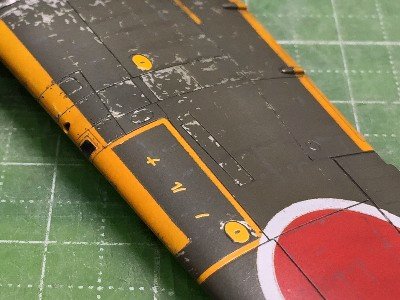 Small cautions were custom made dry decals. |
|
 Aircraft number 46 was dry decals. Ribs were depicted with dry decals. |
 The propeller was painted in Gray Green. I painted in original mixture of FAA Dark Slate Gray (40% #340 Field Green, 45% #333EDSG, 5% #26 Duck Egg Green, 10% GX1 White). Yellow cautions were dry decals. |
|
|
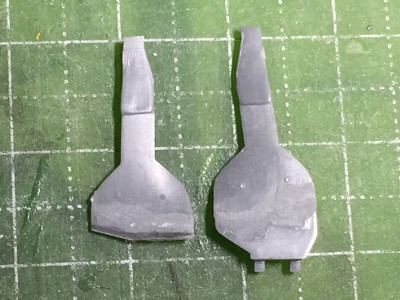 The kit gear cover was enlarged. |
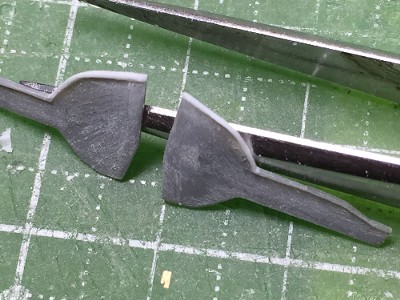 The front edge of the cover was "L" shape. Plastic sheet was glued for the L shape edge. |
|
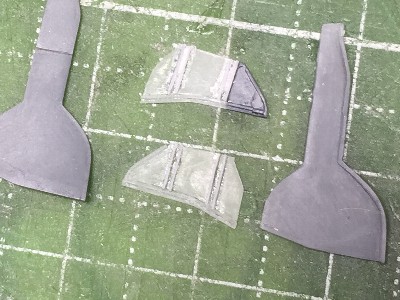 The wheel cover was made of 0.2mm (.008") plastic sheet. |
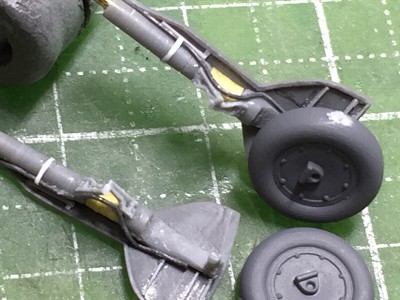 The kit gear leg was thinned. The torque link was made of 0.5mm (.02") plastic sheet. It was engraved with carving knifes. |
|
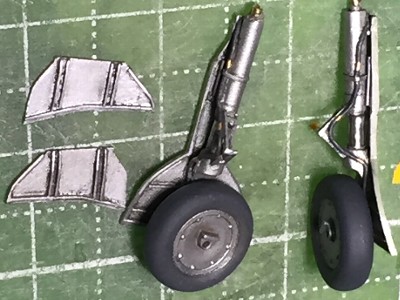 The oleo strut was Hasegawa Mirror Finish. The tire of this photo is upside down. |
|
|
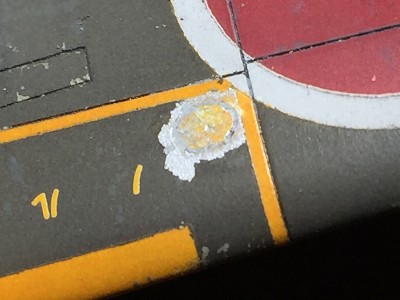 I had mistaken the tank cap. It was filled with Tamiya Putty. |
 Then the cap and circumference were painted with a fine brush. These correcting works became difficutl by Silicon Barrier. That was unexpected. |
|
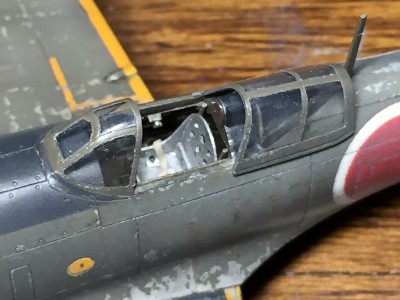 The seat and control stick were glued. The antenna mast was made of brass rod. |
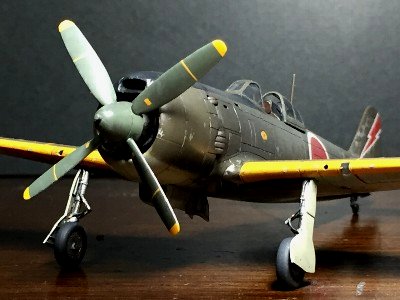 The landing gear was glued. The tail gear was from the kit. |
|
|
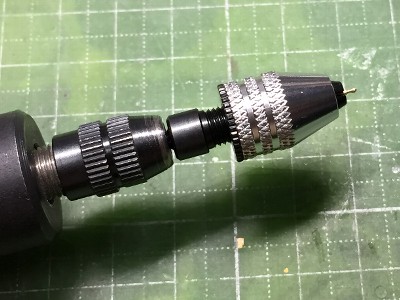 The wing gun was made of 0.8mm (.03") brass pipe. The flexible chuck was set on the universal chuck. |
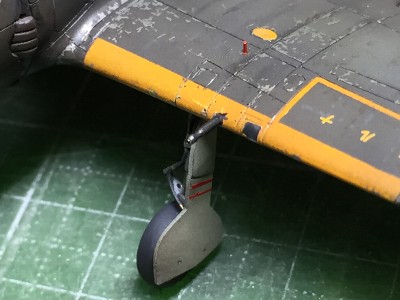 The wing gun was turned as its complex shape. |
|
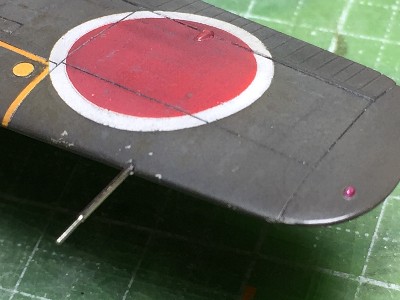 The pitot tube was 0.6mm (.02") nickel silver rod. This was turned as well. |
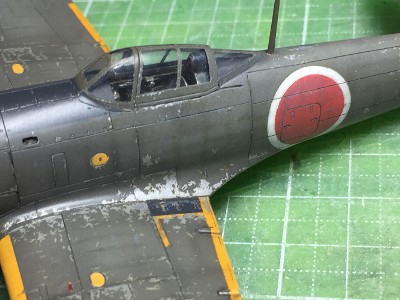 Weathering with Tamiya Weathering Master was added more. |
|
Small amount of dry (without water) Tamiya Weathering Master was rubbed on the model along rivet lines with a dry fine brush. |
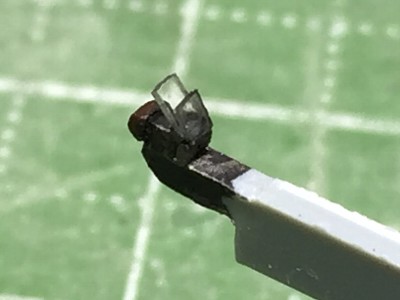 The gun sight was made of some pieces of plastic. The base was 1mm (.04") thick plastic plate. |
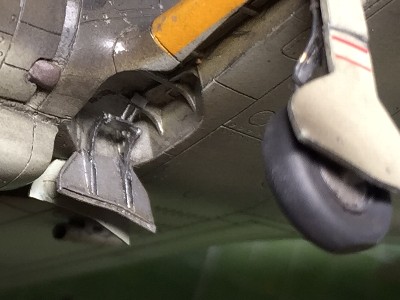 The actuate link of the wheel cover was made of plastic sheet and extended sprue. |
|
 The drop tank braces were made of kit drop tank. |
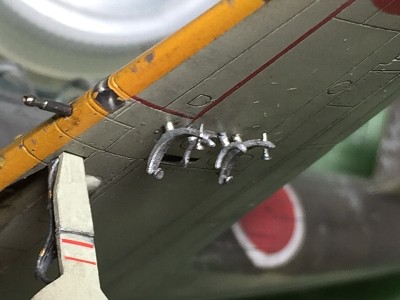 These small screws were made of two sizes of extended sprue. 0.5mm (.02") dia rod was sliced. Then 0.2mm .008") dia rod was glued with thin liquid cement. |
|
|
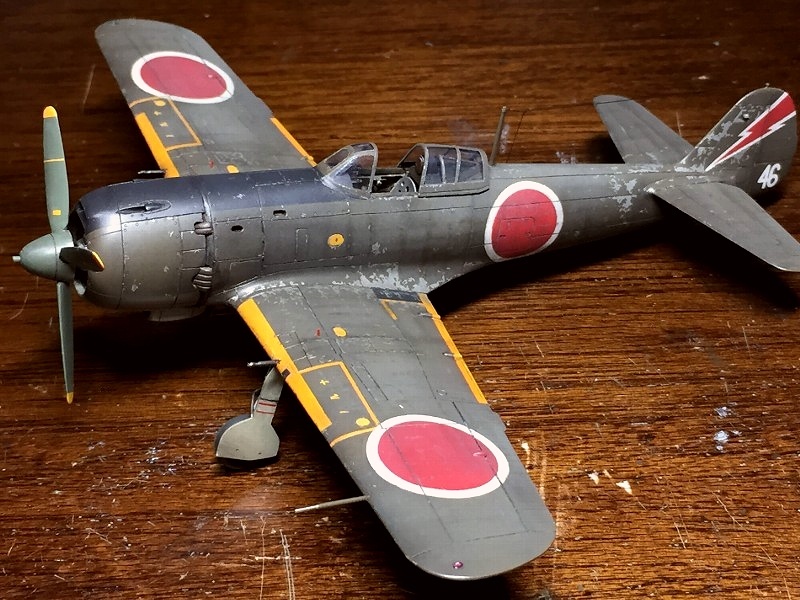 |
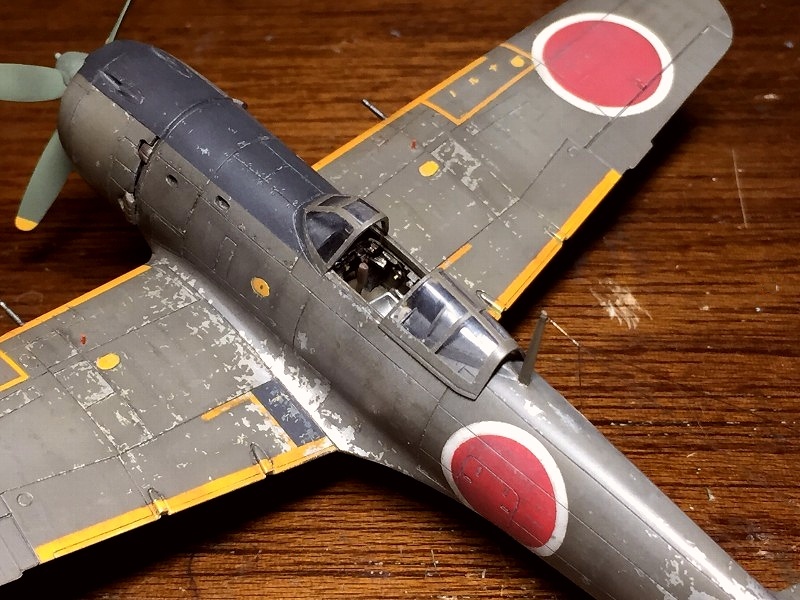 |
|
After a few weeks, I took authentic photos with background gray paper. The first photo was taken from 20cm (8 inches) apart. So this distance is alike many of WW2 original photos. What do you think about the image of my Hayate seen at the same angle as original WW2 photos? Please take note the presence of the engine cowl and the slim fuselage upper half. |
 |
 |
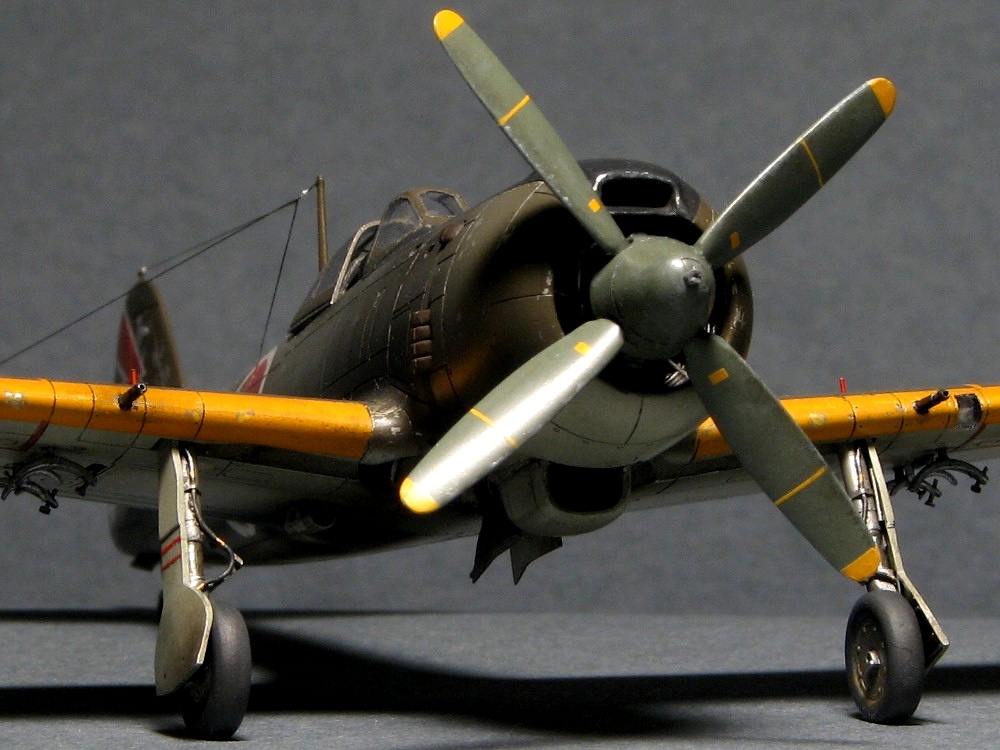 |
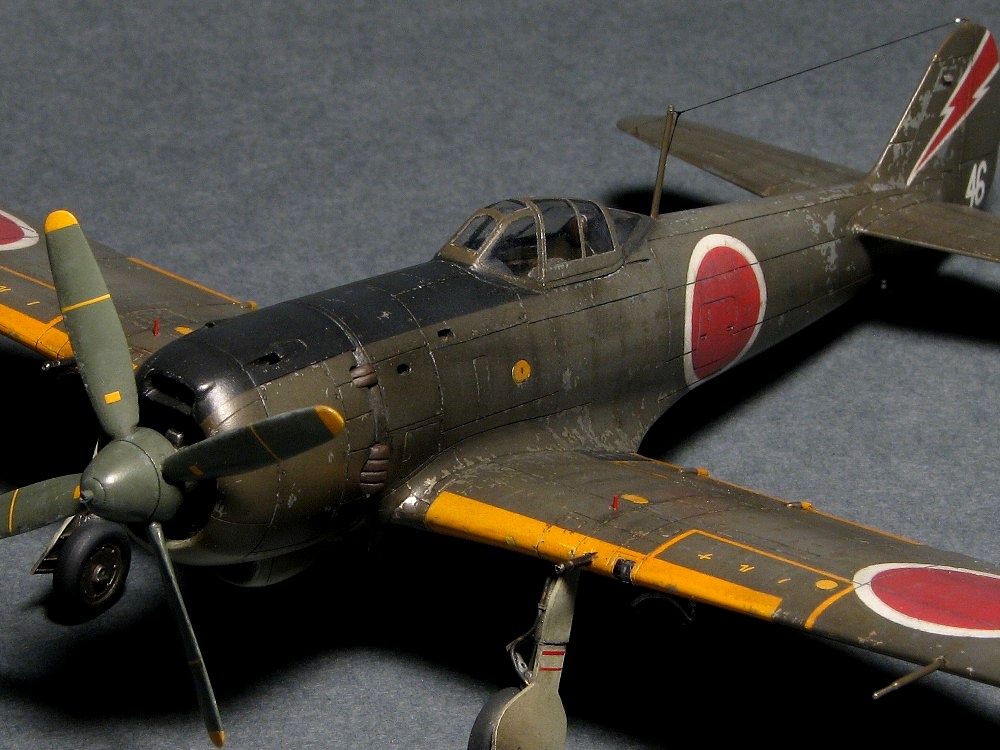 |
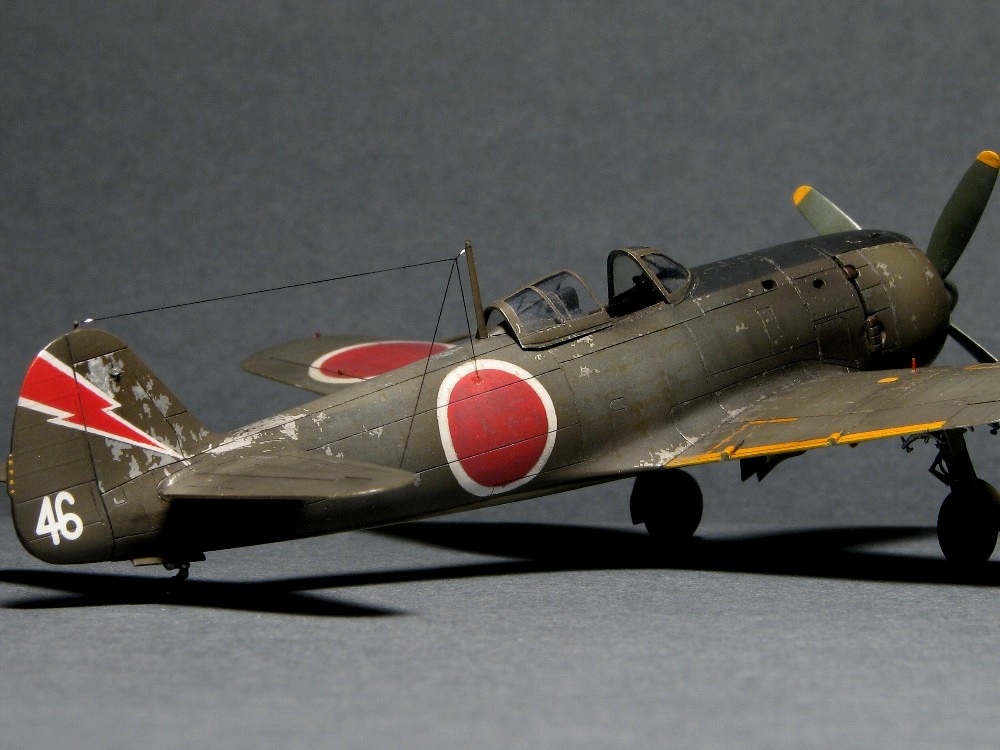 |
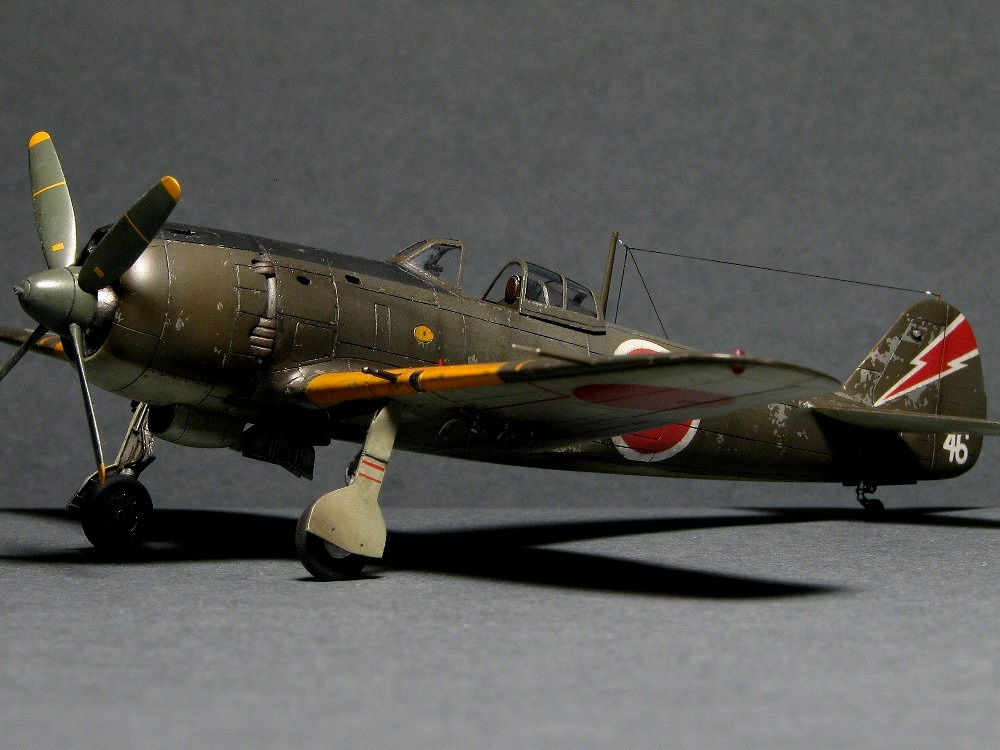 |
|
|
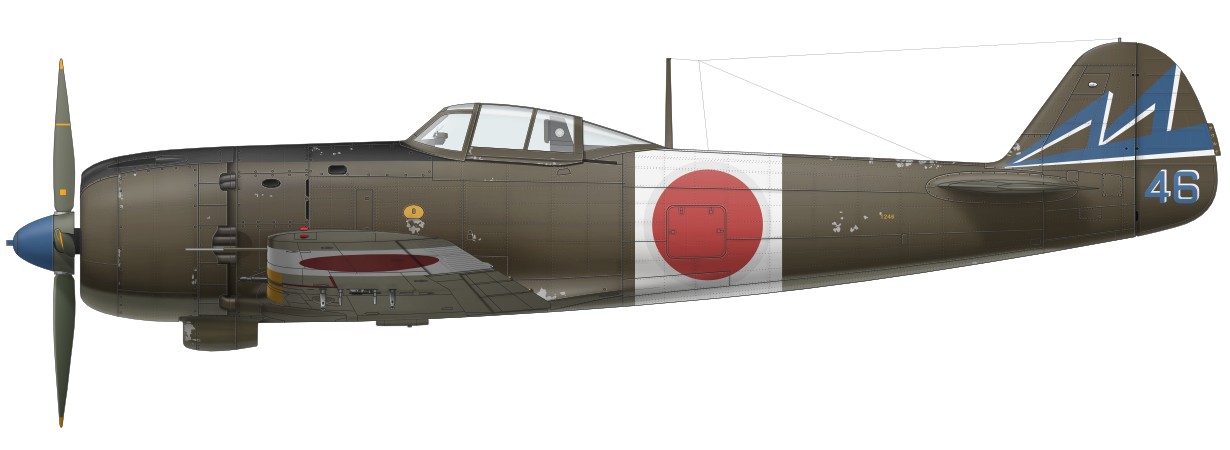
|
|
The 11th Hikou-Sentai serial number 1146, Philippines, late 1944. The aircraft became the only existing Hayate of Chiran Museum. The original photo shows its starboard side. So the port side is assumption. The unit marking was made a design of 11. The shade of No 7 Yellow Green looked like olive drab or dark brown in fresh. It became grayish brown in a process of fading. Finally, it became slightly purplish light gray. I think the first illustration of 47 Sentai was in fresh condition and the second one was in faded condition. |
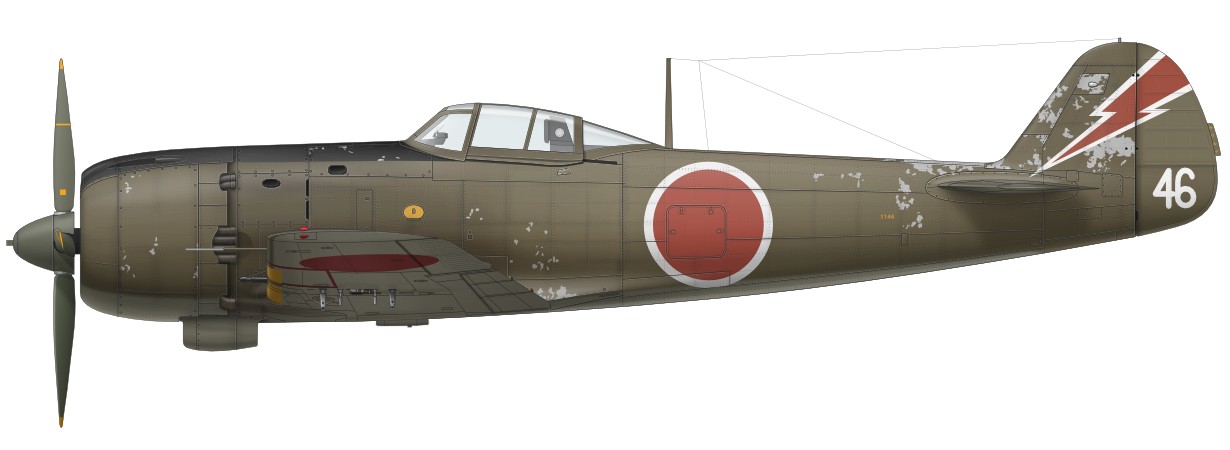
|
|
Dark Green and No 7 Yellow Green were not easy to distinguish in monochrome photos. They were generally distinguished by a comparison with hinomaru red. The former looks dark and the latter looks light. But there might be exceptions. Then I converted to mono tone. |
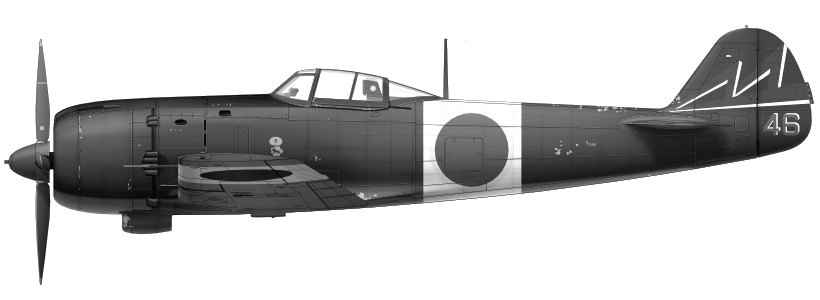
|
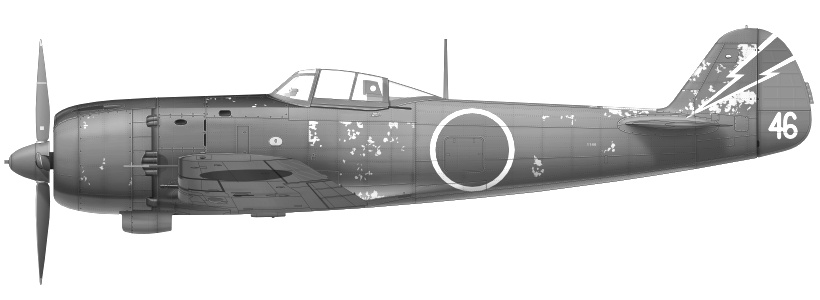
|
|
The early production model of serial 491, flown by 2nd Lt. Hiroshi Shimizu of the 73rd Sentai, Tokorozawa Saitama Pref, Nov. 1944. The 73rd Sentai moved to Philippines in December. This aircraft was manufactured in July 1944. The top rudder chord is long and its trailing edge is squarish. The drop tank rack was located on the center of fuselage. The cockpit was painted in gray green. The aircraft number 91 might be black. |
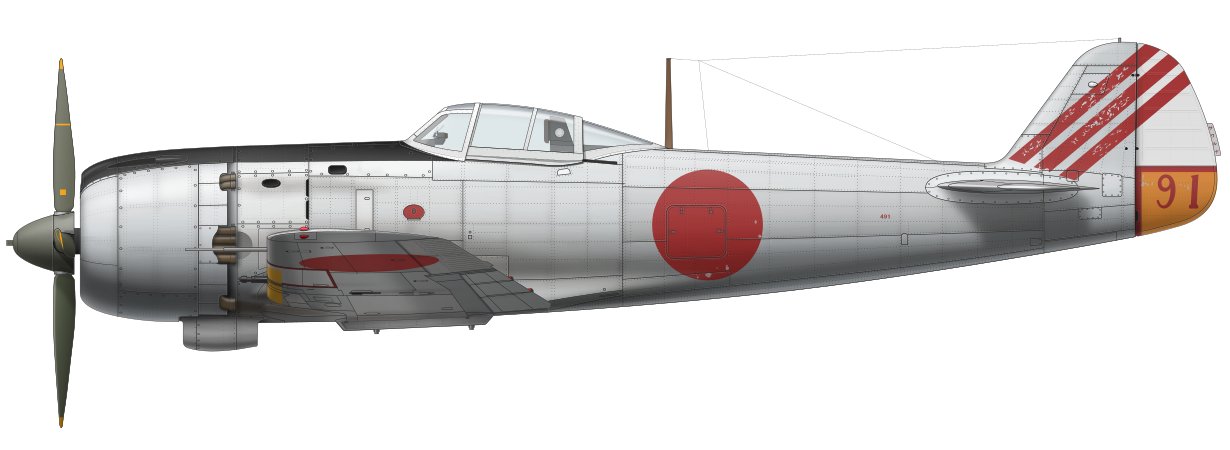
|
|
Otsu model of the 104 Sentai, Manchuria, spring to summer of 1945. The oil cooler was enlarged. Late production model was to be painted in No 7 yellow green. But according to the urgent demand from front line units, some of them were delivered without camouflage. Detail colors - fuel cap panel, antenna mast etc. - were assumption. The area of the antiglare paint was small. The cockpit might be painted in No 7 Yellow Green. |
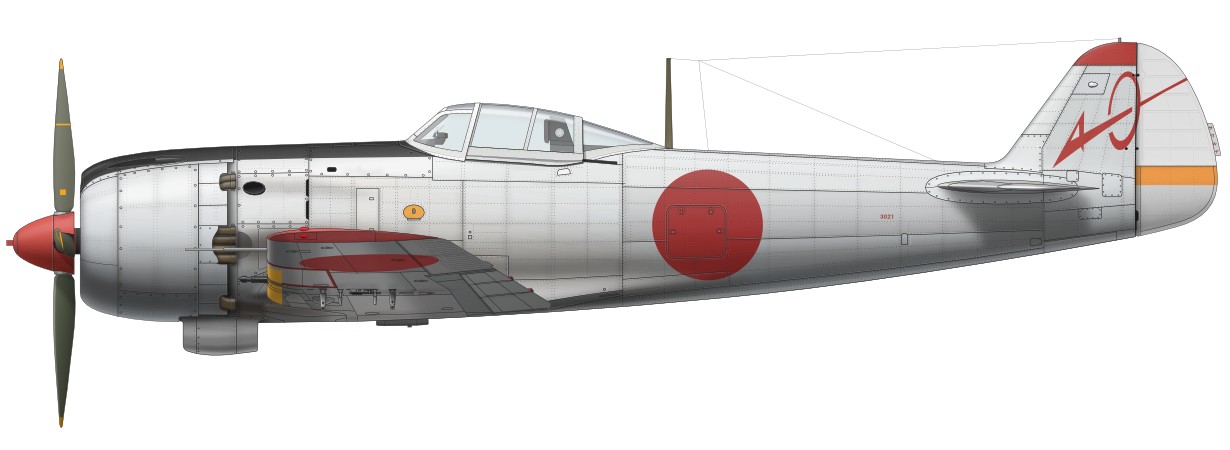
|
|
Early production model of the 1st training squadron in Nakatsu air base, Kanagawa, 1944. |
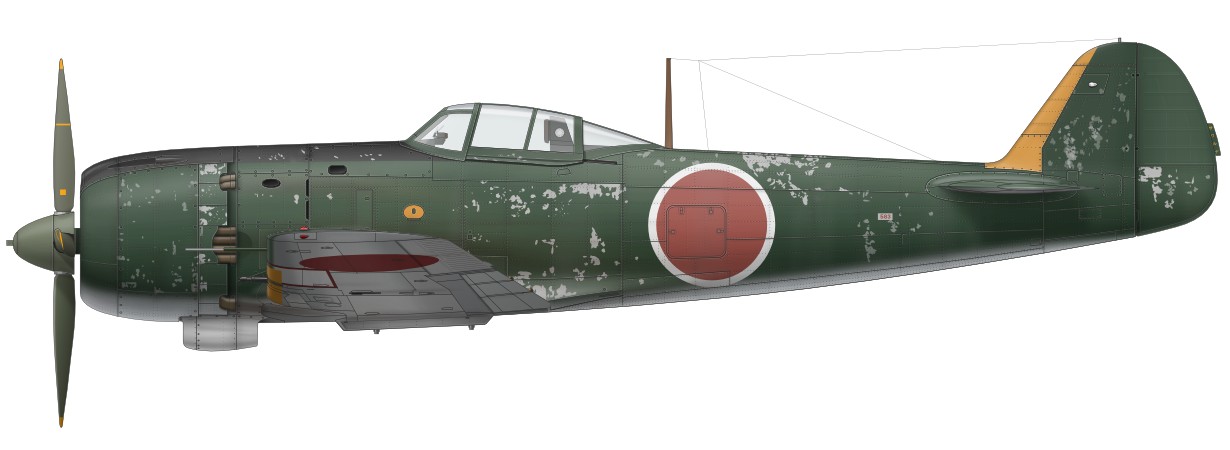
|
|
The increasing prototype of Akeno Army Flying School. The camouflage pattern of its later fuselage half was assumption. The aircraft number might be painted on the tail fin, but it was unknown. |
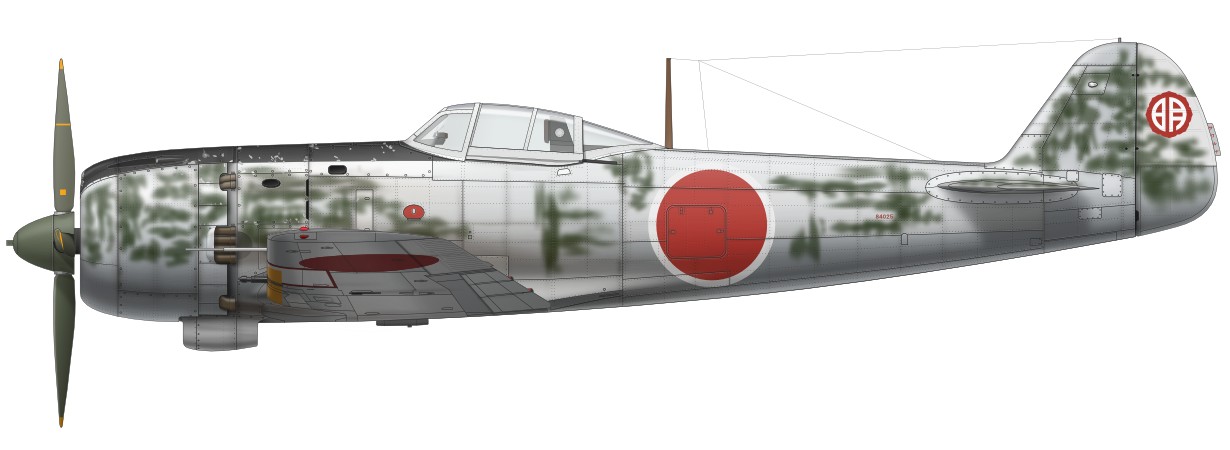
|
|
The last one is very rare camouflaged Hayate. The 3rd squadron of the 102 Sentai in Kyushu. A piece of rudder fabric painted in dark blue is preserved in Kawaguchiko ZeroFighter Museum. Other portion of this illustration is assumption including the production type. |
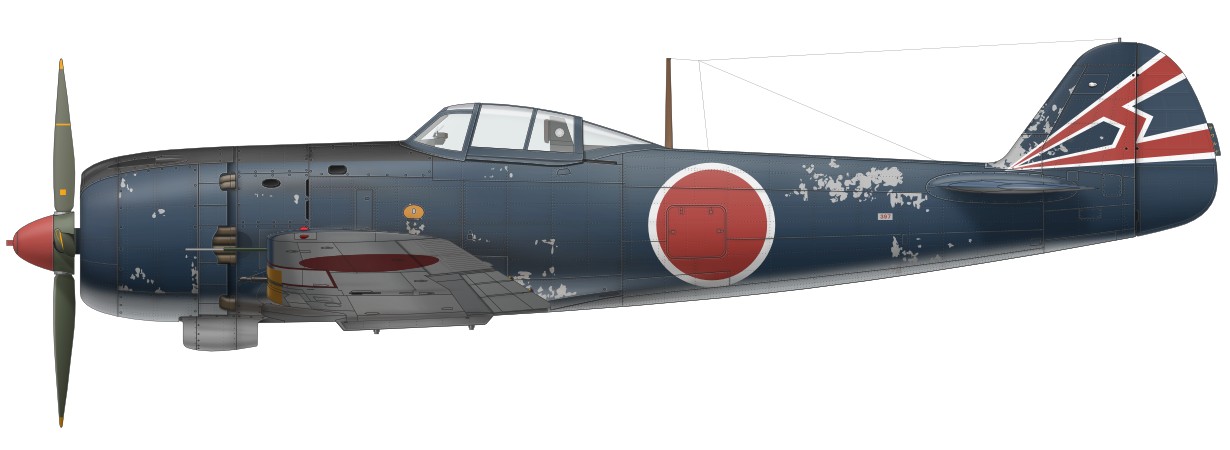
|
|
|